AN AMAZING HATCH…
Despite the ominous presence of a looming thunder storm, this caenis hatch came off one afternoon recently over the island on Birkhall dam in the Eastern Cape Highlands. The hatch was an impressive sight. Normally caenis will not hatch in windy, trouble conditions.
(Click inside images to enlarge them)
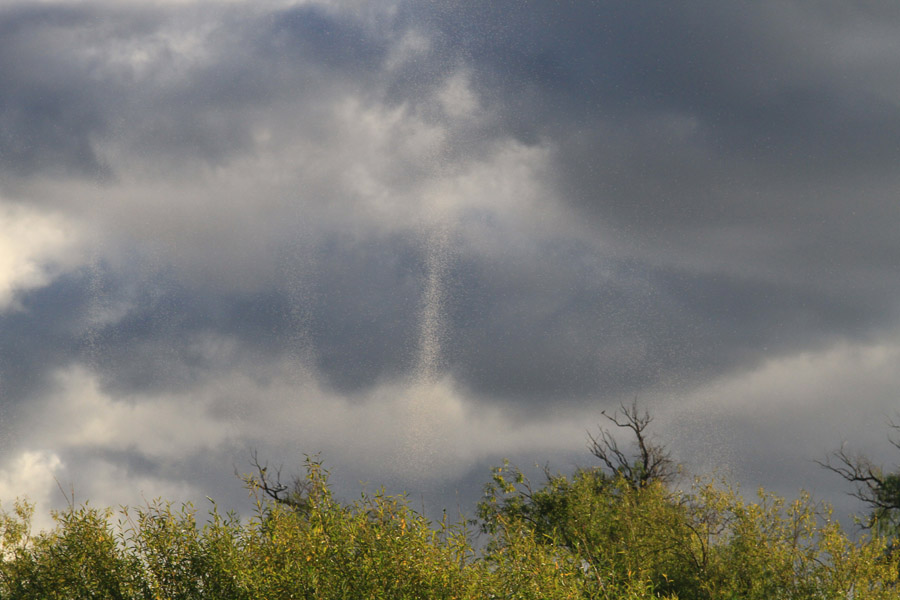
Only the occasional fish was rising and not to any of these tiny adult mayflies or their emergers. The stomach contents from one or two of the rainbows we caught showed only small Baetis nymphs, damsel nymphs, corixae (water boatmen) and a few chironomid larvae.
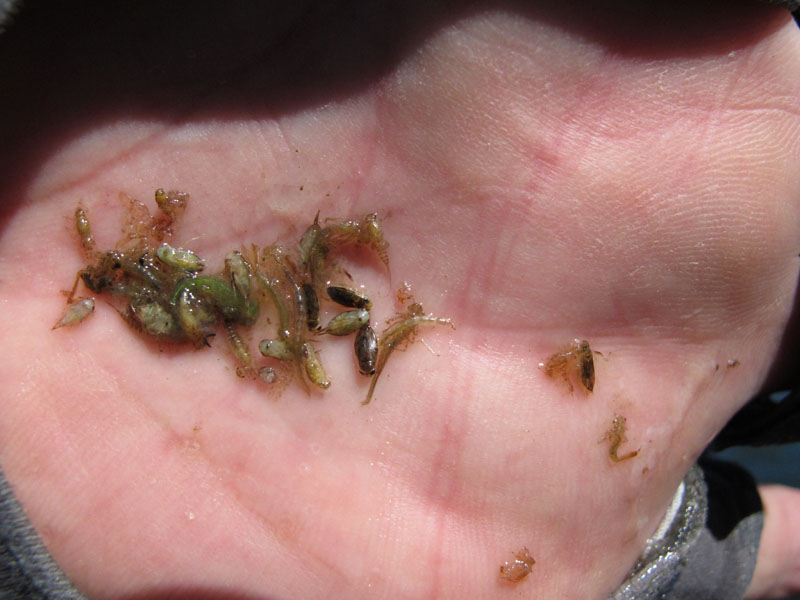
The presence of corixae in the stomach contents would suggest this particular fish was taken in the shallows, which was the case.
MAXMILIEN JOSET’S FLIES
Last week I mentioned the rare flies of Swiss fly dresser, the late Maxmilien Joset. Here is a close up of one of them, named the Mouche De Mai.
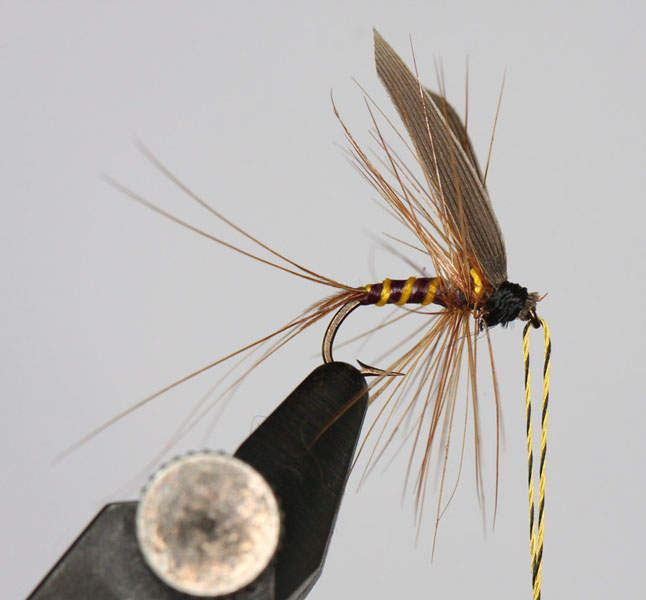
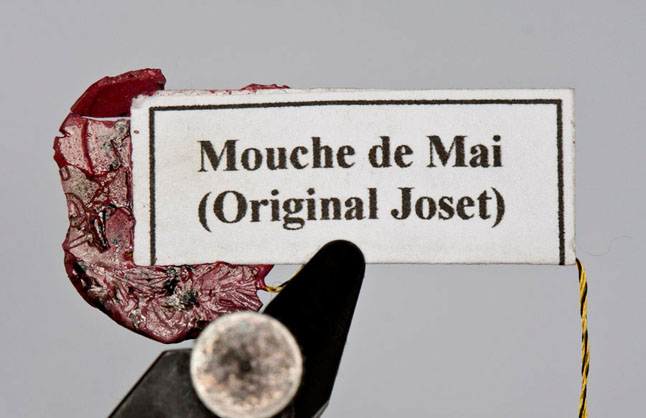
See http://www.swissflies.ch/originale_joset.php
IMAGES OF THE SMALBLAAR
Gerhard Laubscher is an extremely versatile fly fishing photographer. He sent me these crisp and colourful images taken when he and Chris Bladen fished Beat 2 on the Smalblaar River in the Western Cape the week before last.

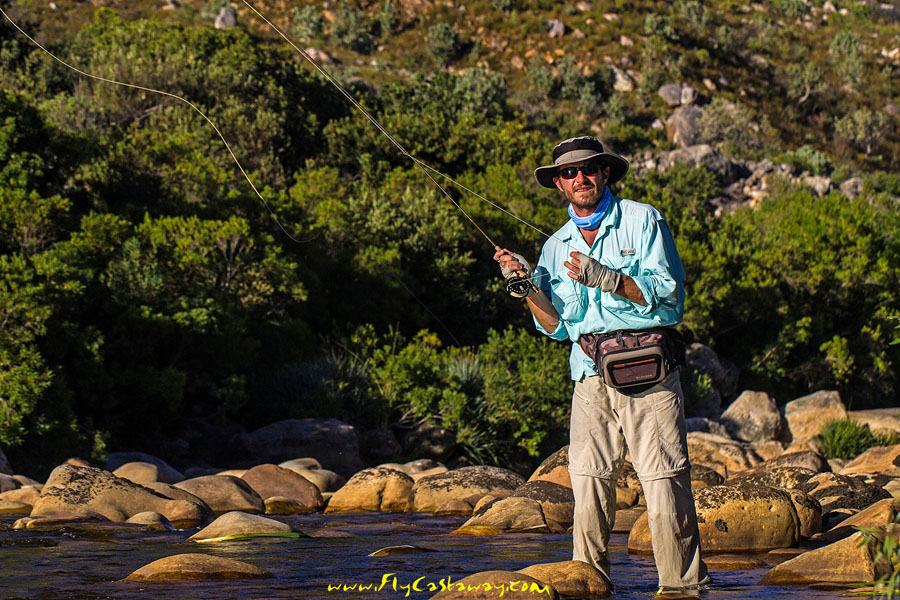
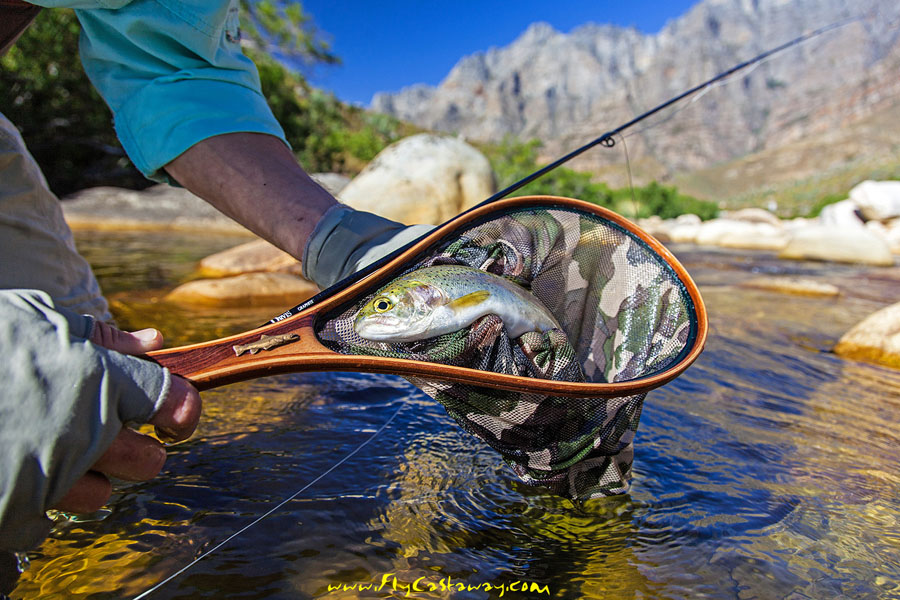


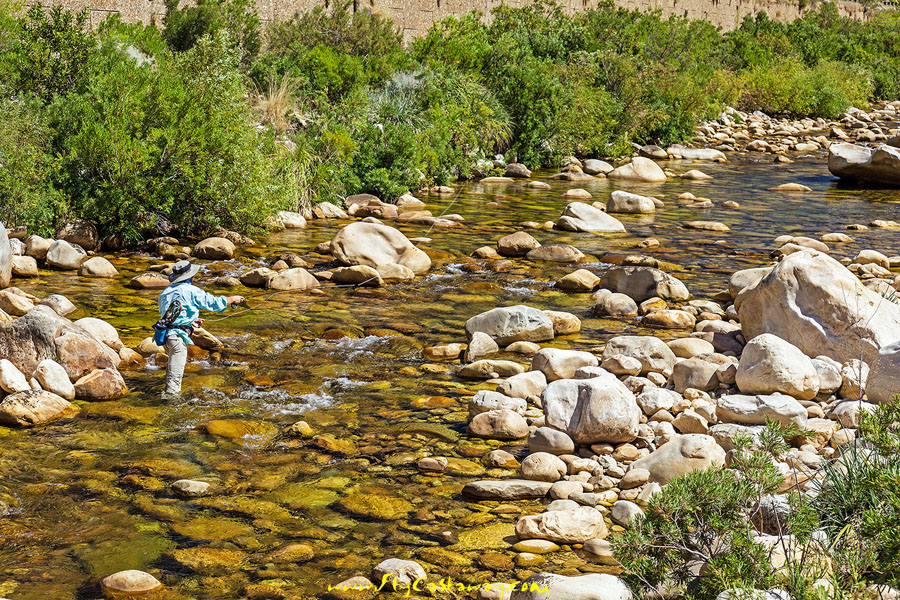
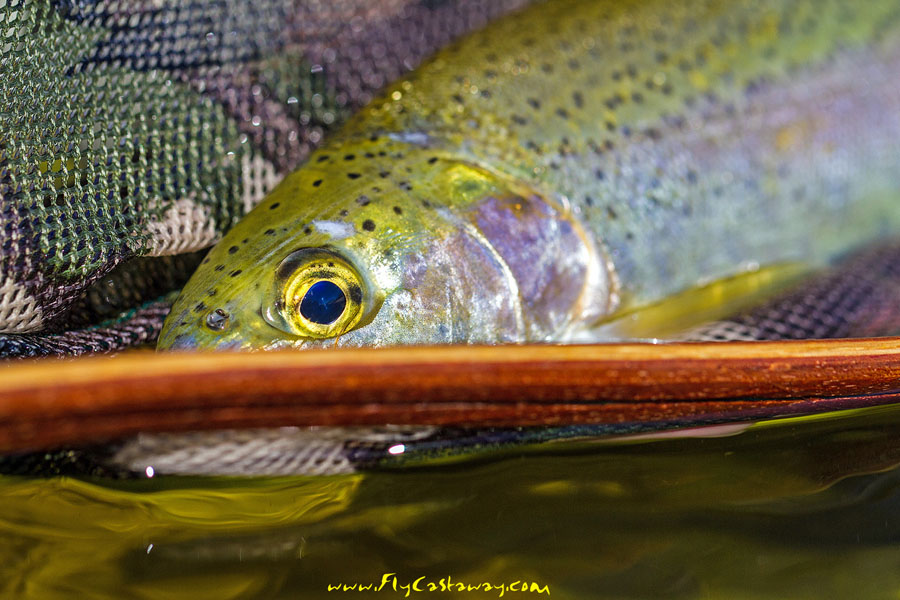
HIGHMOOR DAM FISHES WELL
From Timothy Martin
Here are a few photos from a recent day trip to Highmoor, possibly one of the best we have had there.
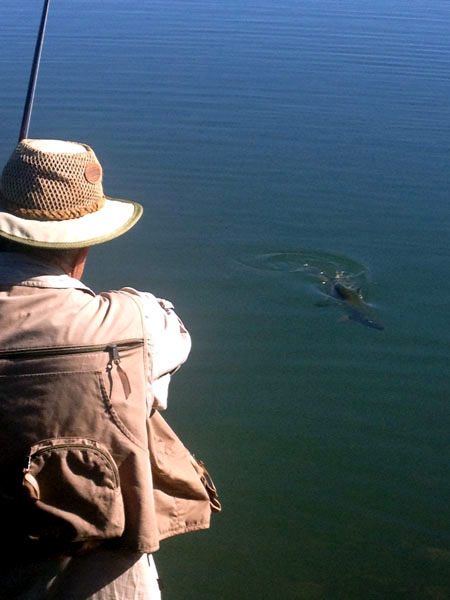
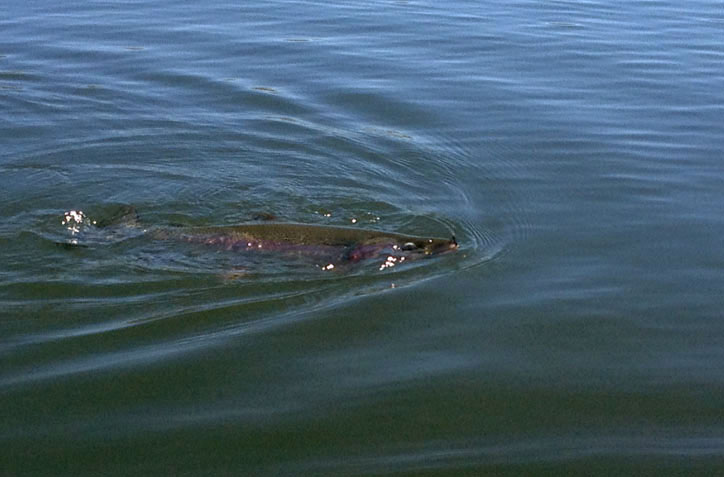
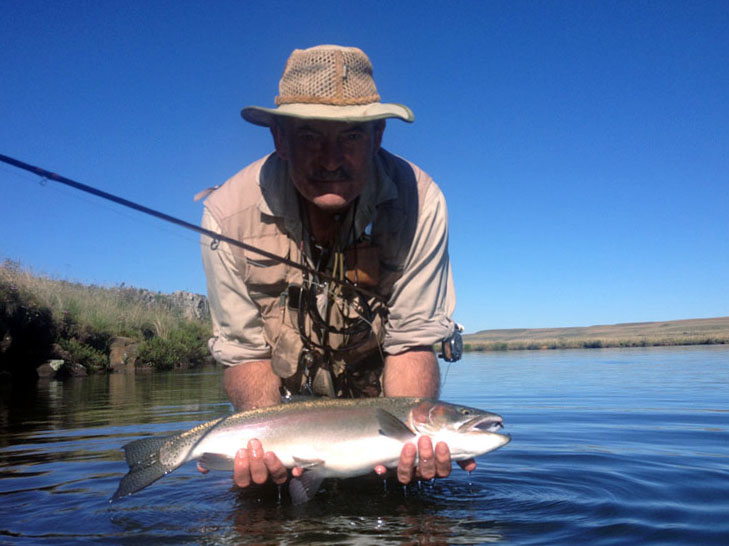
Anton Smith caught three fish of 58, 61 and a cock fish of 62 cms, all in incredible condition. I got two fish of 42 cm and 56 cms.
All were taken on a combo of an Anton Smith design pattern called a Syanide, like a small black Woolly Worm, with a small blood worm rigged below it. Three were on the blood worm and one on the Syanide. It was a stunning day.
SAGE MAKE A ROD FOR LADIES
The Grace is a Sage rod all in pink, right down to the reel seat and rod tube. The idea behind it is, I think, a splendid one.

You guessed it. The rod is intended to heighten breast cancer awareness. Well done Sage!
IMAGES OF LESOTHO
From Yuri Janssen
Back in November, an old school friend of mine decided that a visit to Lesotho's backcountry mountain streams was well overdue. We chose to base ourselves in the Katze area as there happens to be several relatively unexplored rivers and streams within an hour’s radius of the Katze village. Here are some of my images from the trip.
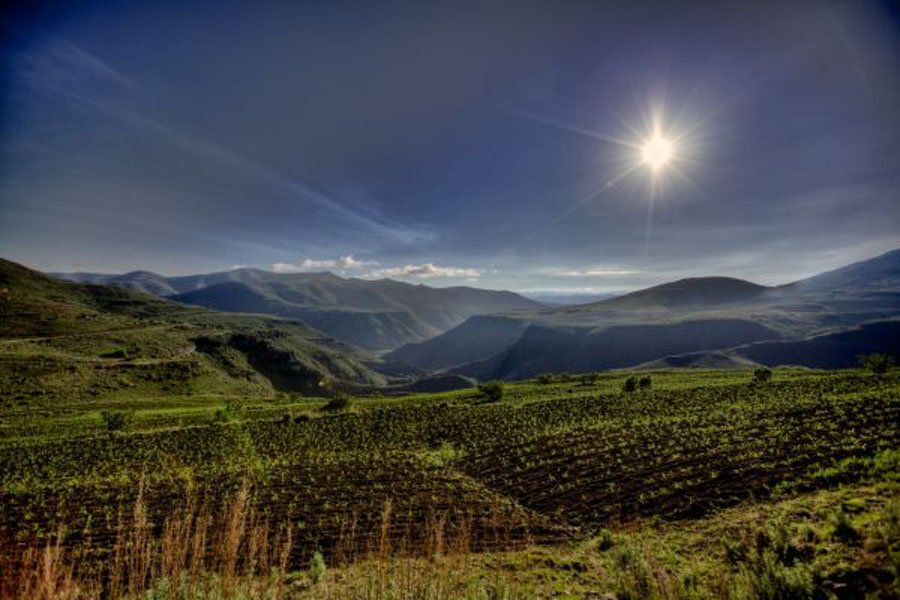
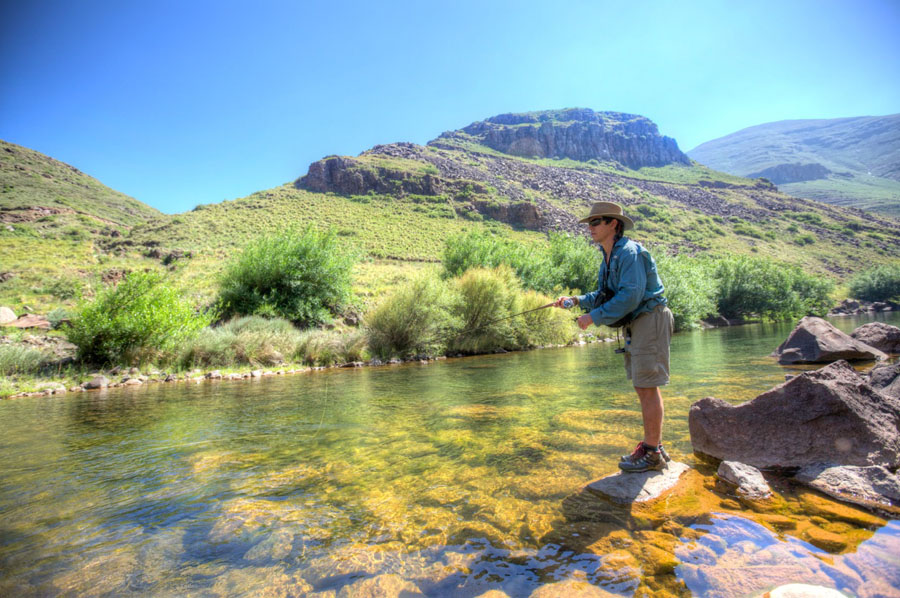
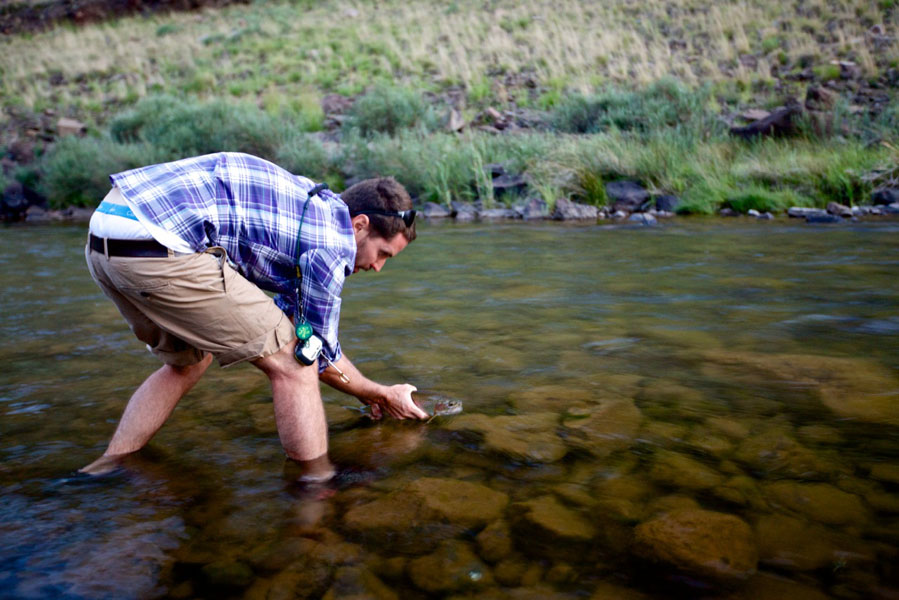
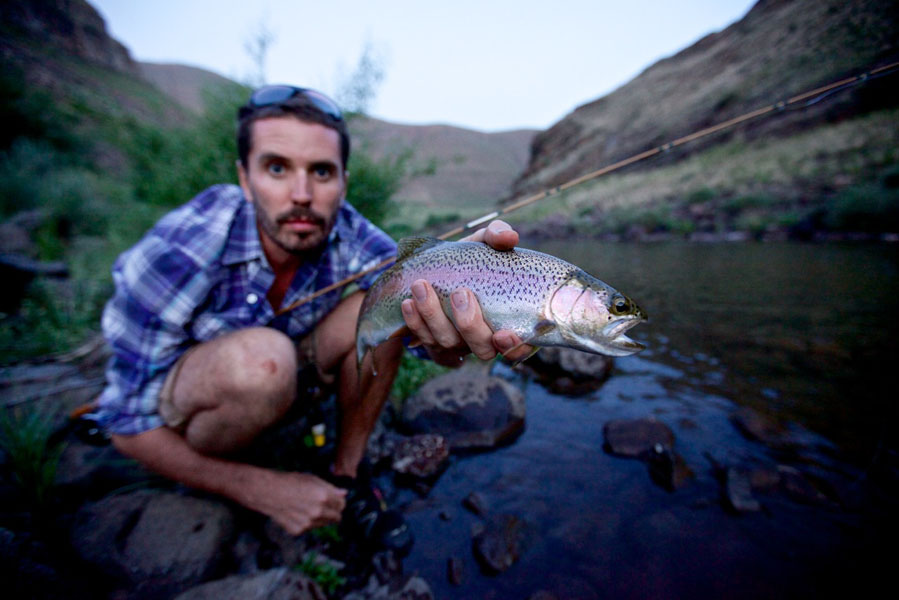
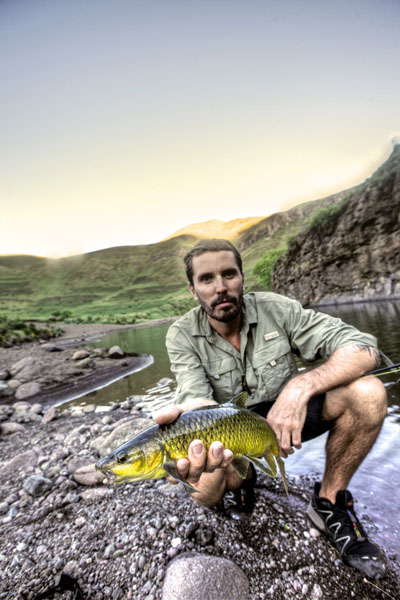
The GS pattern caught 80% of our trout and yellowfish, even in the larger sizes. It was named the Gangnam Style by Edward Truter!
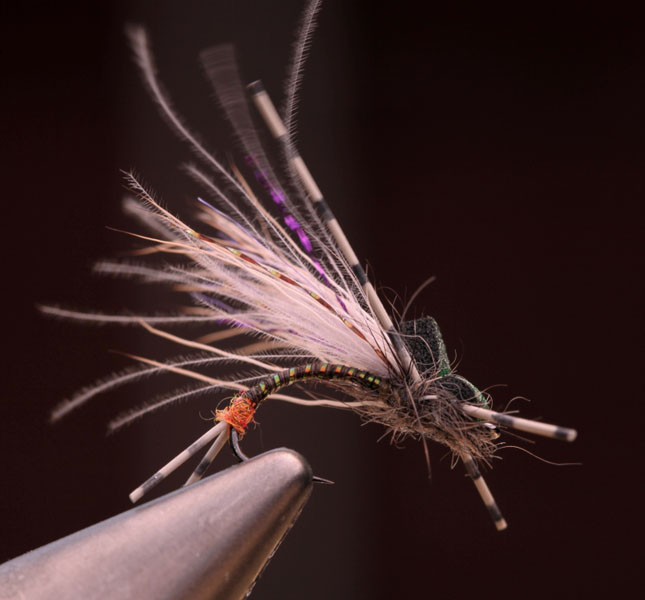
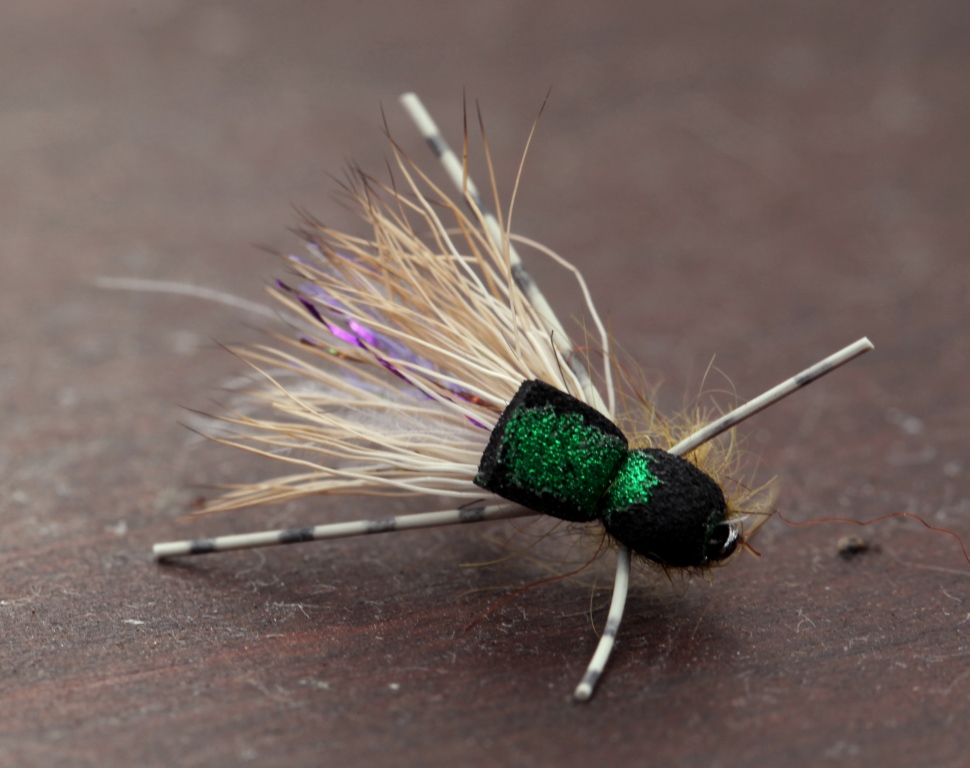
NICE TROUT FROM THIS YEAR’S MATATIELE TOURNAMENT
From Clyde Kemp
Some hard fishing was done at the tournament in some extreme fishing conditions. Saturday brought gale force winds and heavy rain, and Sunday morning very cold temps but I was on the water at 5.15am before the sun was and took this fish at 5.45am. For the rest of the morning with the cold front coming in and the barometer dropping quickly not many other fish were caught before the close of the competition at 1:00. I managed to finish victorious with the attached picture of the Cock Brown. The bus weighed in at 3,26kgs!
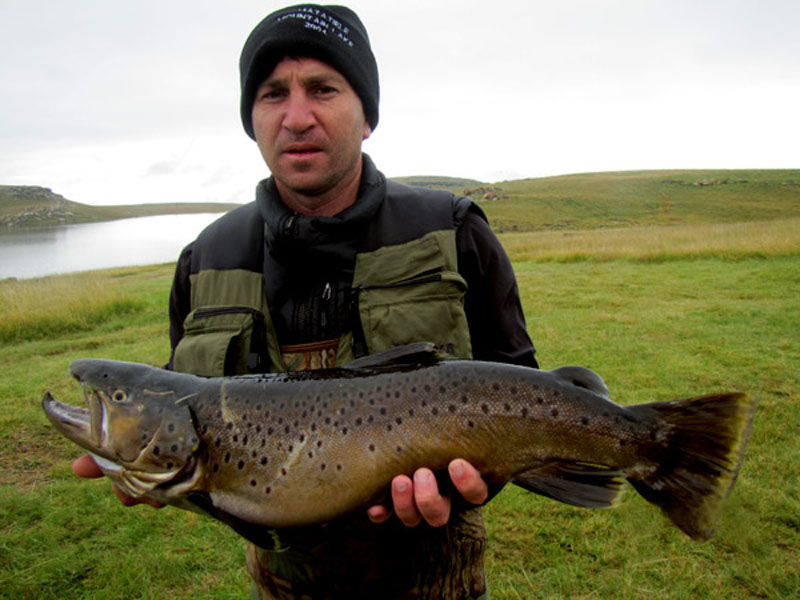
(In my 1 April Newsletter I incorrectly recorded this fish as coming from Stream Bernards Lake in KZN)
GREEN GRUBS
Fishing the Sterkspruit last month I checked the stomach contents of a number of trout.
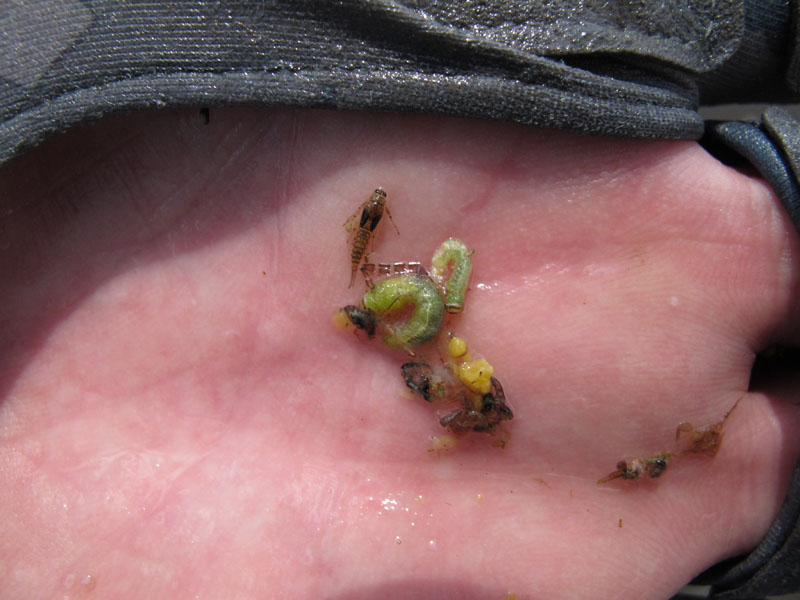
At first glance I thought the green bugs in the image above were caddis larvae, the green, free-swimming hydropsyche, but they were actually sawfly larvae, sometimes known as inchworms. The fish, a 12 inch rainbow, was in a shallow run on the Sterkspruit and had taken a dry fly.
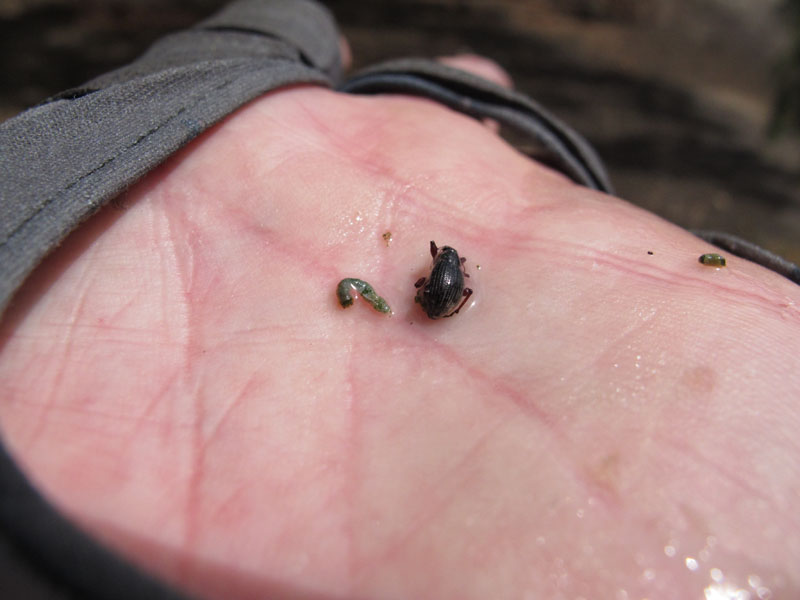
However, I did find green caddis larvae together with a beetle in the next trout’s stomach. So given the prominence of green, grub-like bugs, I tied a couple of patterns to augment my very low fly box.
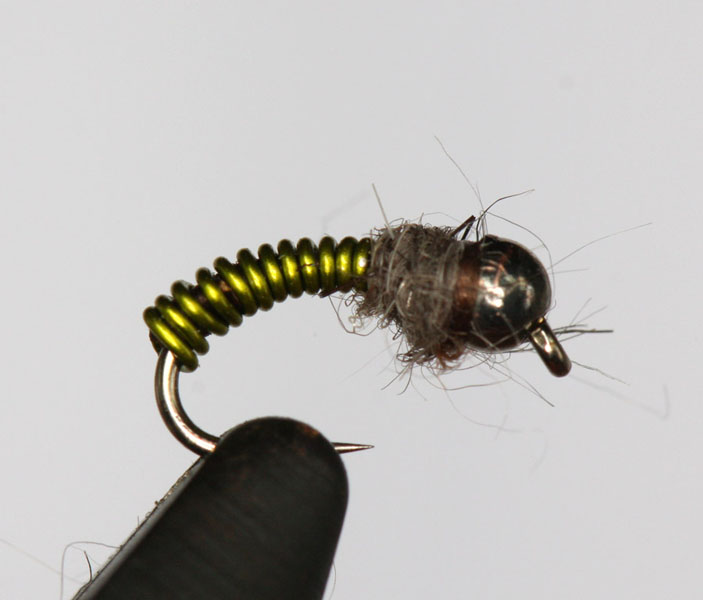
The first is really just a green Brassie, but it proved very effective in the Sterkspruit. It’s tied on a # 16 grub hook (Grip model 14711BL), has a body of green wire with hare’s ear dubbing wrapped at the thorax behind a black bead.
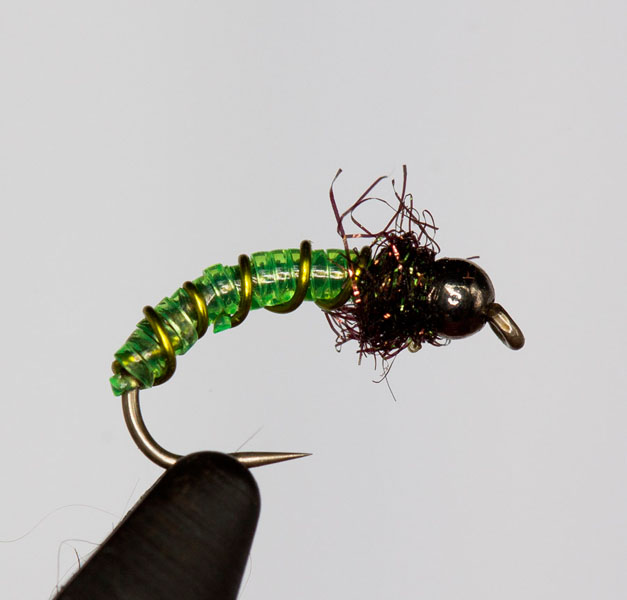
The second pattern is tied using lime green Nymph Rib ribbed with green wire. The thorax is Hend’s Spectra dubbing (black, code 46), but Hareline’s Ice Dub in black or peacock would do as well. This pattern was similarly effective.
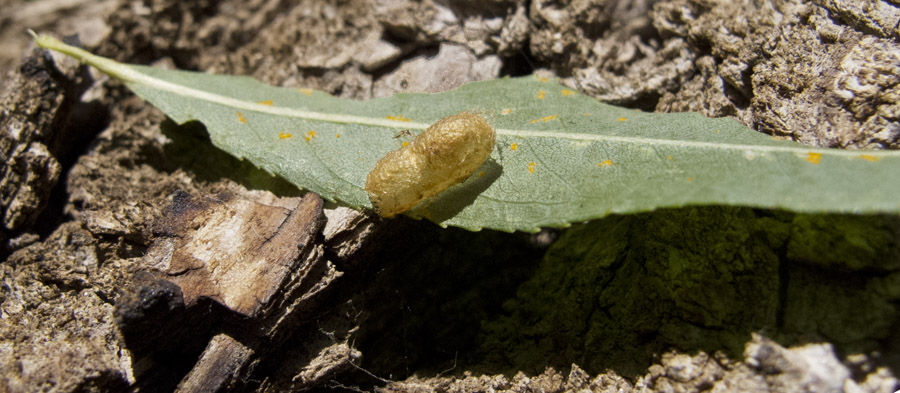
Sawfly larvae commonly pupate on willow leaves as shown above, and feed on them after emergence. Many worms fall off the willows, especially in windy conditions, and are still a great source of food for trout in the Barkly East district. At one stage, a non-indigenous sawfly larva was prevalent in huge numbers on the exotic box willows once common in this area, but since the partial eradication of the box willow, the outcome of the exotic inchworms is uncertain.
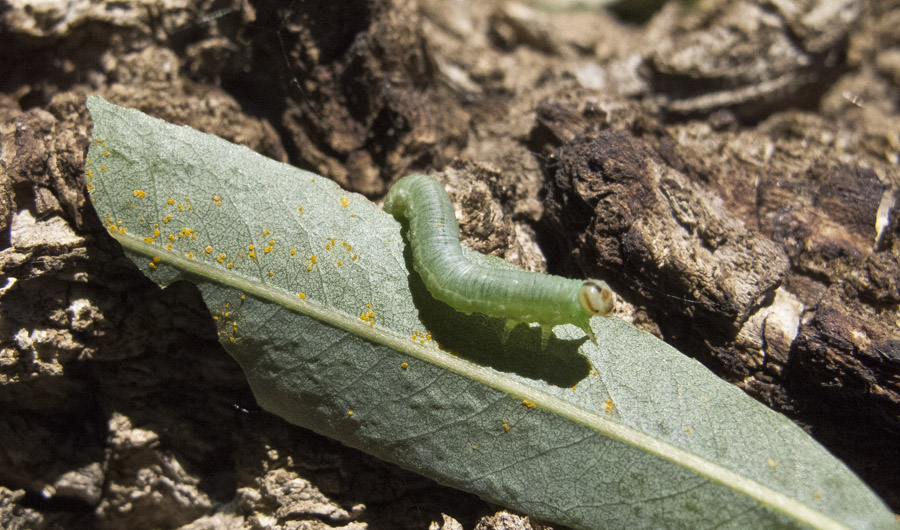
Images taken in March 2013
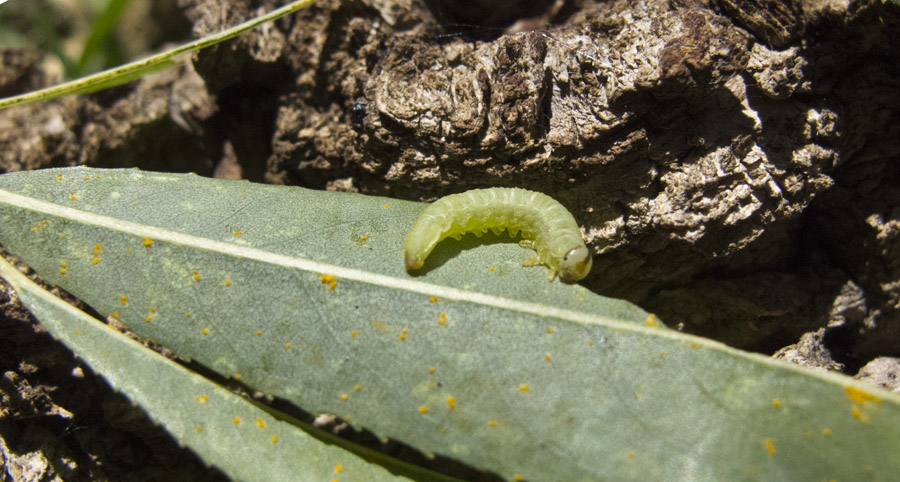
The indigenous sawfly larvae feed on our local willow trees and the ones pictured here are probably the local, indigenous variety.
Of course they initially float after falling into a stream, so no weight is required for any imitation of them.
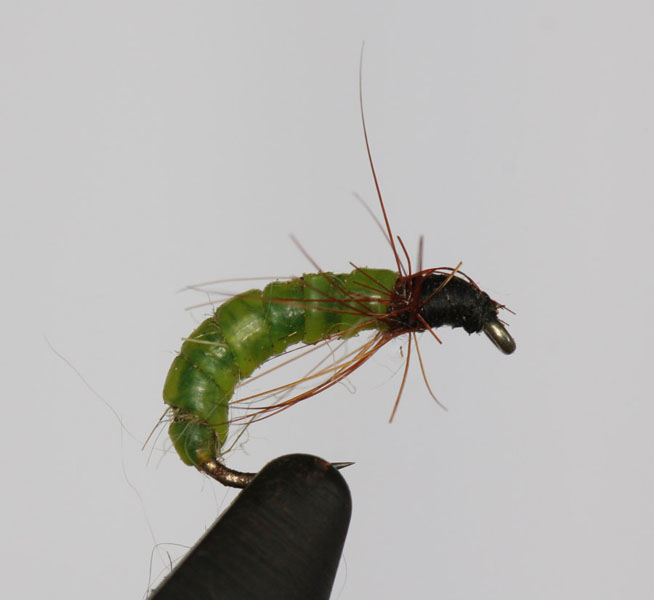
I am not sure where the fly pictured above comes from (just found it in my box) so I can’t give you any details on it, but to me it looks a perfect inchworm imitation. The body appears to be pale green foam wrapped over hare’s ear dubbing.
All simple flies, but in the Barkly East and Rhodes areas especially, I think a few green ‘grub- like’ patterns are essential.
HANS VAN KLINKEN KLINKHÅMERS
I was very fortunate to receive a few dozen flies tied by Hans Van Klinken himself! Just for your interest, here are two of his Klinkhåmer Specials.

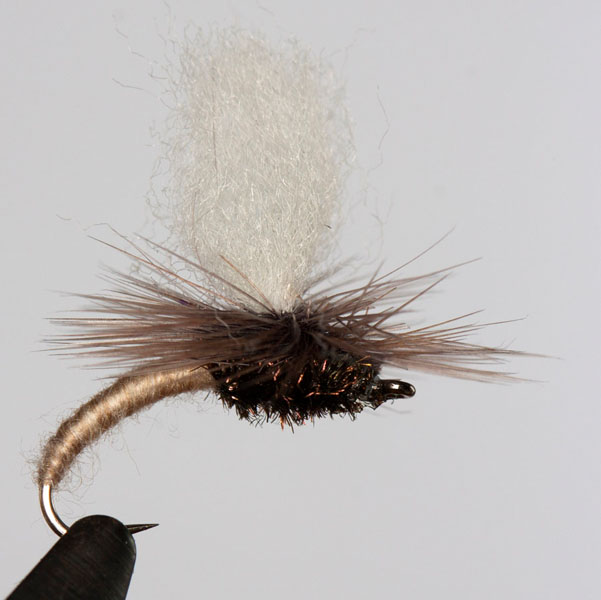
TROTTING
From Clem Booth in London
I've been fly fishing for 45 years and these days more often than not with the dry fly. Perhaps I'm starting to appreciate that it's not about how many fish one catches but rather how, and for me, nothing comes close to the dry fly.
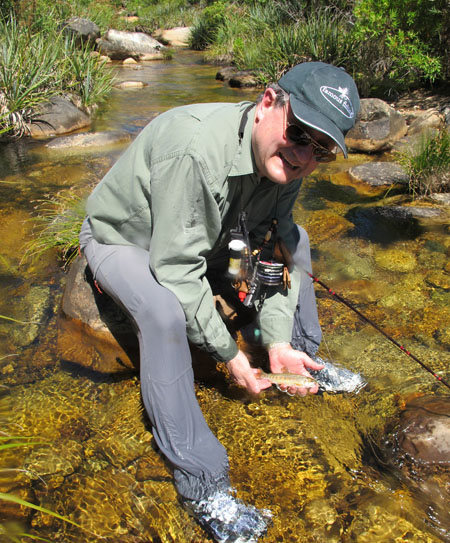
Clem Booth on a Cape stream
On the other hand, I've had lots of fun using other methods; whether it be deep-sea trolling off Bermuda or fishing for tigers in the Swartkops Dam with a prawn. In this neck of the woods (Southern England) we endure a long winter but have amazing Grayling fishing coming into its own after closure of the trout season. The Grayling takes the fly with alacrity but it's sometimes the case that high water makes other methods more likely to succeed.
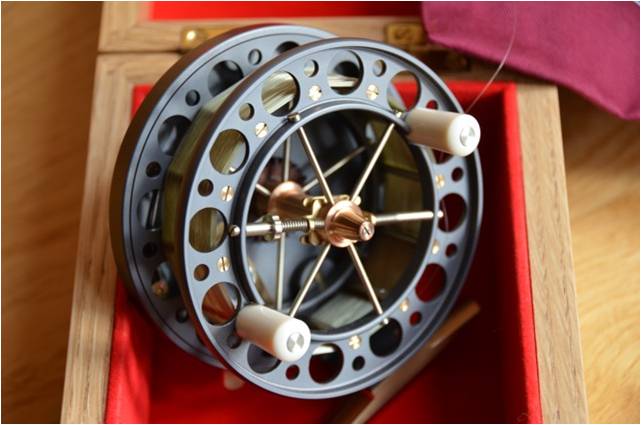

Occasionally my fishing partner and I reach for the 11 foot trotting rod - in my case an 11 foot cane rod built by Edward Barder - and the centre pin reel to trot with maggots and worms. It's a great way to fish.......a light float is allowed to move downstream at the pace of the flow and a good centre pin spins at the right speed, only needing a finger to regulate the pace. When the float dips and a good grayling takes, it's as satisfying as fishing with a dry fly.
Above are a few images of the centre pin made for me by Chris Lythe, a real master of the art. This one is called a Scotton Long Trotter and I use it with an 11 foot cane rod made by Edward Barder.
Variety is sometimes indeed the spice of life!
HERE’S A STRANGE TROUT, I THOUGHT…
I chanced to spot this 10 inch trout last month from a bridge over the Bokspruit. The current was flowing towards me and the fish was holding on a shallow sandbar facing downstream, in other words looking straight at me! Don’t worry trying to spot it. In this picture that’s all but impossible, save to say he is in shallow water on the extreme right of the run. But I will point the trout out later.
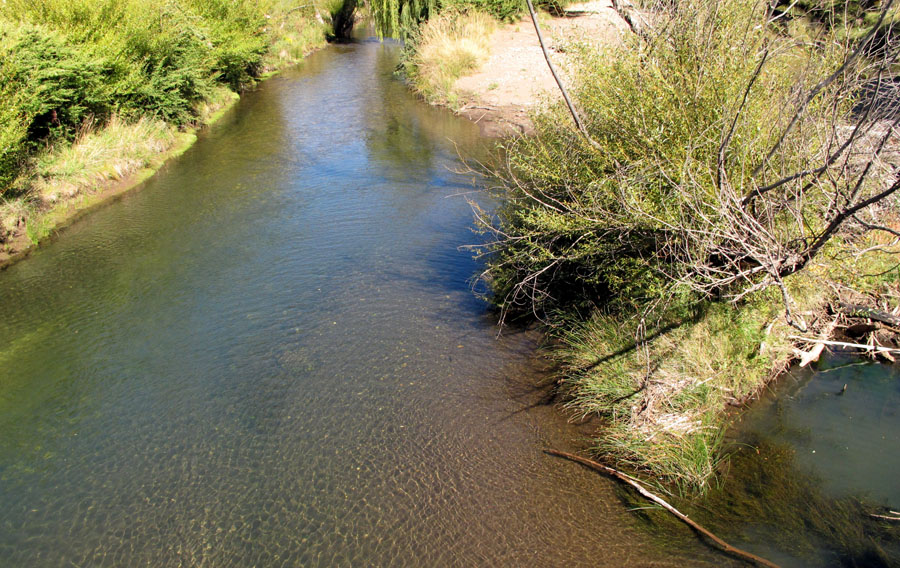
At times he would move a metre or more to his right or left to intercept drifting nymphs. I was amazed at just how far he would travel to fetch food and just how fast he was going about it.
Then it struck me that he couldn’t be doing this facing downstream! Only when a bright yellow willow leaf drifted over his head did I realise he was sitting in a back eddy where the current reversed direction completely. In the picture below I mark the current direction in blue and the trout in orange.
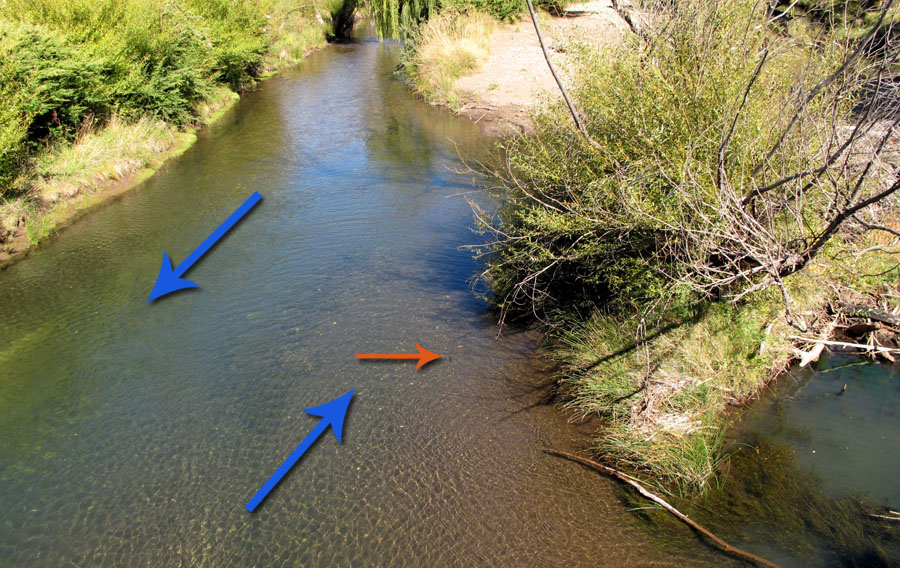
Take a marker on the yellow stones behind this fish and in the next few pictures you will see how far he moves to feed.
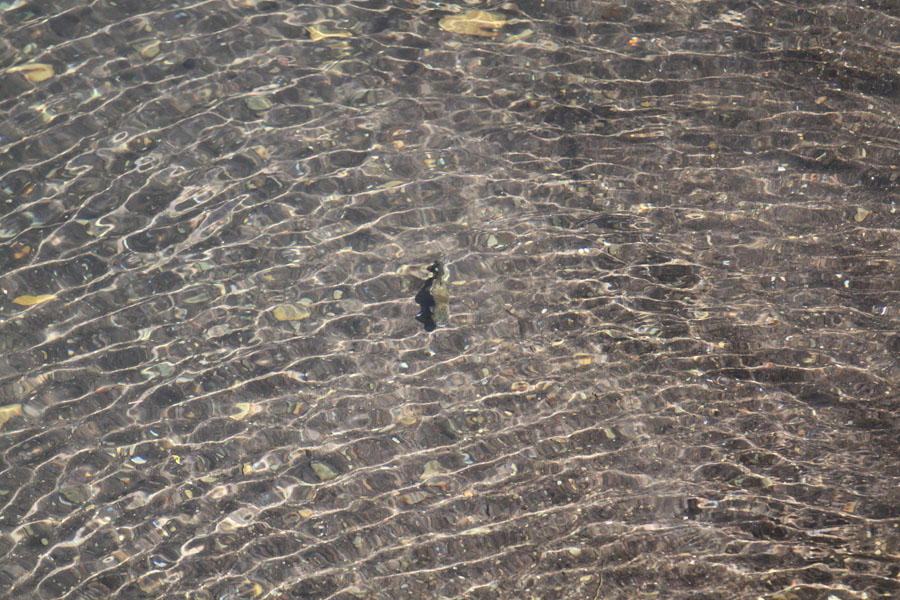
Then left at 9:00
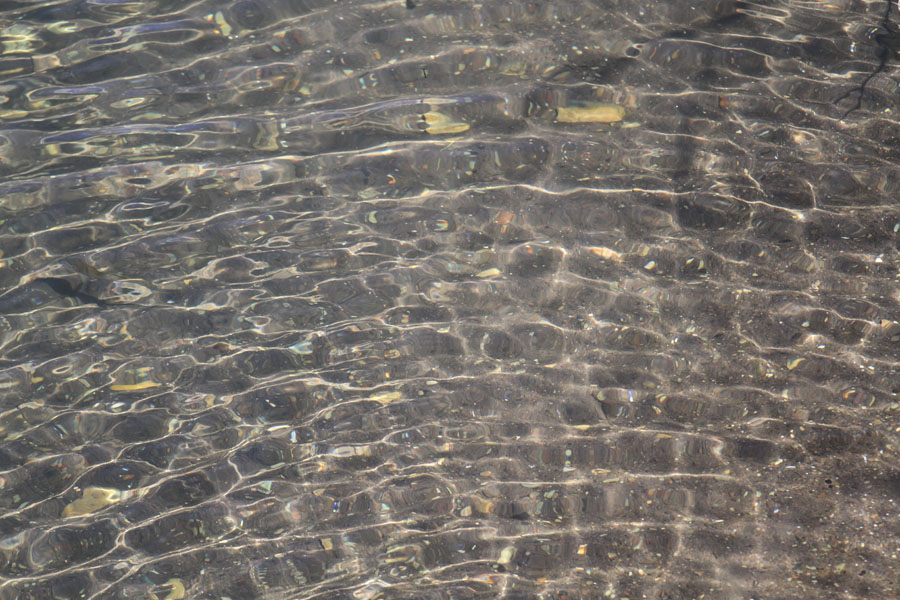
Then right at 1:00
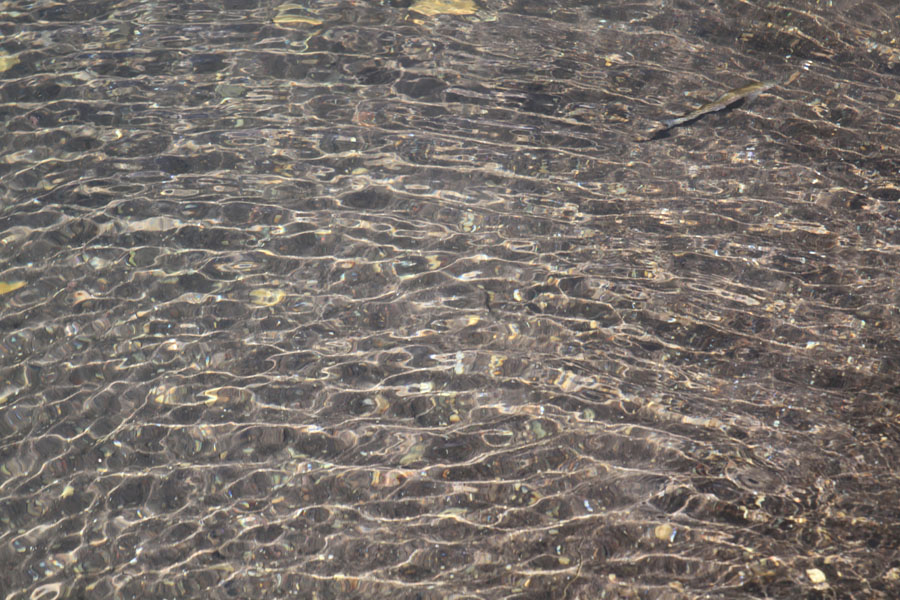
It was a great place for him to be. The eddy was bringing a regular supply of food at a slower rate than the main current would have, making his life a lot easier. Anglers approaching from downstream would give him plenty of warning and he was close enough to deep water to make a bolt for cover if he needed to.
CONDITIONS IN KZN
Just as it looked like the rains were easing off, another few good falls recently (24mm again last night) have put the brakes on the fishing. That being said, I was on The Mooi River with two U.K. clients last week, Monday and Tuesday, and the river was already looking low, so the rains are still most welcome. Nothing in the way of rises to be seen but we did manage to squeak a couple fine looking brownies of approximately10-12 inches on sunken nymphs in the deeper pools; the runs would have been better had we had another six inches of flow.
Reports from The Bushman's River is that there is still a good flow there with a number of rainbows still coming out of the Bushman's Hatchery stretch outside Giant's Castle Reserve.
On the stillwater front, reports of fish are coming in, popular patterns still in the summer spectrum of black and olive colours. One of the local anglers has been using the Mrs Simpson Frog on an intermediate line to great effect recently, but called in a total panic on Friday to report that he was on a local water with fish moving and jumping everywhere, but the frog wasn't doing the business! Such is fishing!
Tom Sutcliffe



